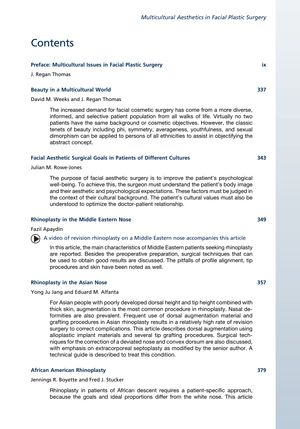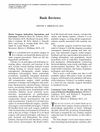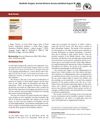Contents
July 2014
in “
Facial Plastic Surgery Clinics of North America
”

TLDR Cosmetic surgery should be personalized for different ethnic groups to ensure the best results and patient satisfaction.
The document discussed various aspects of facial plastic surgery and aesthetic procedures tailored to different ethnic groups. It highlighted the importance of understanding cultural and ethnic differences in achieving optimal cosmetic results. Topics included rhinoplasty techniques for Middle Eastern, Asian, African American, and Mestizo patients, as well as Asian blepharoplasty, ethnic considerations in hair restoration surgery, and laser skin treatments for non-Caucasian patients. The articles emphasized the need for personalized approaches to meet the unique anatomical and aesthetic needs of diverse patient populations, ensuring psychological well-being and satisfaction with the outcomes.





